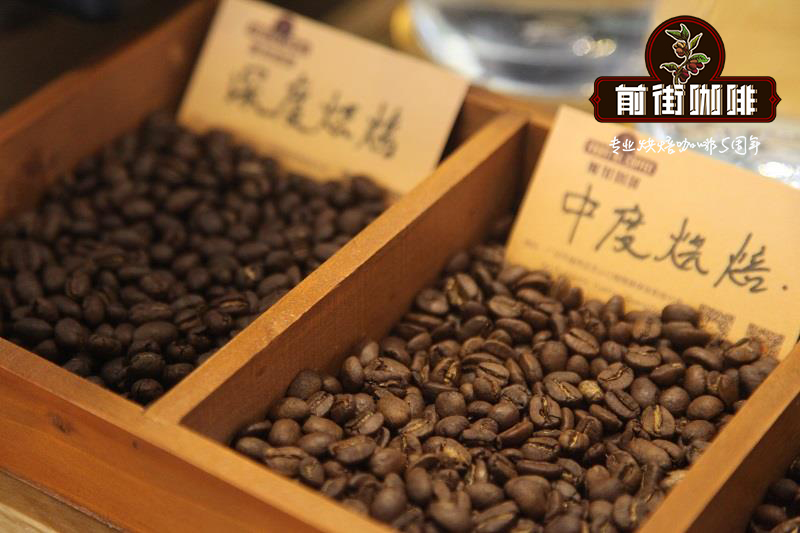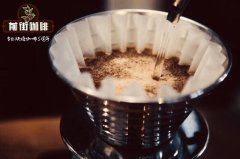Introduction of Indian style-stained Malaba Coffee producing area _ Indian Coffee brewing data _ how about Indian Coffee

Professional coffee knowledge exchange more coffee bean information please follow the coffee workshop (Wechat official account cafe_style)
Introduction of Coffee producing areas in India
Coffee was brought into the establishment of the first coffee farm by pilgrims as early as the 16th century, and you might not have imagined that India produces much more coffee than Ethiopia and any other Central American country, with 900000 hectares of land growing coffee beans. About 140000 coffee farms in India cover an area of less than 10 mu for small-scale farming, which are distributed in coastal mountains of 900-1200 meters to the south and east. Arabica accounts for two-thirds of the coffee varieties and the rest is Robsta species, with a total output of about 44-450000 bags, making it the fifth largest coffee producer in the world.
Wind-stained coffee is a new flavor created inadvertently. In the 17th and 18th centuries, India shipped coffee beans to Europe by sailboat, which took six months. The raw beans were placed on the bottom of the barn and absorbed the moisture and salty taste of the sea. The raw beans arrived in Europe and had deteriorated. The color changed from dark green to the yellowish brown of rice. The acidity of the coffee almost disappeared, but it unexpectedly developed a strong nutty and cereal flavor. It tasted full, with a bit of black rice tea flavor. Nordic people like this kind of golden alternative coffee very much. In 1869, the opening of the Suez Canal and the advent of steamships shortened the sailing time between India and Europe, but customers began to complain that Indian coffee was "tasteless", losing the charming yellow and nutty flavor of the past, and orders plummeted. Indian exporters began to study the solution.
Originally, the time of Indian coffee beans shipped to Europe was shortened by more than half, and there was no time to ripen into "transformation" and lose their original flavor, so exporters thought of the salty and wet environment blown by the Indian ocean along the coast of Malaba in southwestern India every year from late May to September. After several experiments, it was made similar to the golden, sour coffee in the past, so it was named "monsoon coffee", commonly known as wind-stained coffee. For hundreds of years, it has been widely used by European coffee manufacturers to prepare mixed coffee beans, which can increase the consistency and tea feel.
When it comes to Malabar, the most common wind stain in Indian coffee, the main reason is that in ancient times, coffee took months to arrive in Europe. During the voyage, due to exposure to salt-filled sea breeze and moisture, the coffee beans changed a special taste, and the original fresh dark green coffee beans also became yellowish brown with Mantenin. At that time, Europeans liked the rich thickness and peculiar flavor.
Export port
MANGALORE is the port of New Mangalore in India. It is located in the southwest of the Indian Peninsula, north of the mouth of the Gulpur River in Karnataka, northwest of Mengelor, facing the Arabian Sea.
The northeast bank of the MANGALORE waters is a bulk cargo terminal, which is used for groceries and is accessible by railway. Southwesterly winds are often blowing in summer, averaging force 5-6, and are also affected by tropical storms. Tide is a half-moon type, exporting minerals, pepper, coffee, sandalwood, cashew nuts, tea and so on. The original port about 2 nautical miles from Xingang to the south is small in scale and is mainly used for coastal trade and fishery. The port of Mengeluer is to the south, about 10 kilometers away from the new port and 6 kilometers away from the old port.
Brewing data of Indian coffee beans
Recommended cooking method: hand flushing
Degree of grinding: 4 (Fuji R440)
Water temperature: 83 °C
Kono filter cup, 17 grams of powder, water temperature 83 degrees, grinding 4, water powder ratio close to 1:13
Technique: steaming with 30 grams of water for 30 seconds
Segment: water injection to 120g cut off, slightly larger water injection to 221g
The total extraction time is 1:50-2 minutes.
Other suggestions for trickling extraction:
Normal pressure: recommended 4 degree of grinding, water temperature 83 °C
Philharmonic pressure: recommended 4 degree of grinding, water temperature 83 °C
Indian coffee bean brand recommendation
The Indian coffee beans baked in Qianjie Coffee-Wind-stained Malaba Coffee are fully guaranteed in terms of brand and quality. And more importantly, the performance-to-price ratio is extremely high, a pack of half a pound 227 grams, the price is only about 80 yuan. According to the calculation of 15 grams of powder per cup of hand-brewed coffee, 15 cups of coffee can be made in a bag, and each cup of coffee costs only about 5 yuan, which is very cost-effective for coffee shops to sell dozens of yuan a cup.
Qianjie coffee: Guangzhou bakery, the store is small but a variety of beans, you can find a variety of unknown beans, but also provide online store services. Https://shop104210103.taobao.com
Important Notice :
前街咖啡 FrontStreet Coffee has moved to new addredd:
FrontStreet Coffee Address: 315,Donghua East Road,GuangZhou
Tel:020 38364473
- Prev

Hand brewed Indian wind stained coffee parameter recommendations_Indian coffee how to drink_Indian coffee bean price report
Professional coffee knowledge exchange More coffee bean information Please pay attention to coffee workshop (Weixin Official Accounts cafe_style) Beautiful mistakes that occurred in Indian coffee in those years created a special historical flavor of Monsooned wind-stained coffee In the early years, during the Great Navigation Period, Indian coffee beans had to be transported to Europe, which took more than half a year to arrive, and they stayed in the humid and hot environment of the cabin for a long time.
- Next

Introduction to the varieties of Indian coffee beans. How to bake Indian style-stained Malaba coffee beans?
For more information on coffee beans, please follow the Coffee Workshop (Wechat official account cafe_style) Indian coffee bean growing variety Kent: the Tibica hybrid S288 and Typica was found in Kent Coffee Garden in Mysore, India in 1911, with high yield and rust resistance. But did not get good results in the cup test.
Related
- Does Rose Summer choose Blue, Green or Red? Detailed explanation of Rose Summer Coffee plots and Classification in Panamanian Jade Manor
- What is the difference between the origin, producing area, processing plant, cooperative and manor of coffee beans?
- How fine does the espresso powder fit? how to grind the espresso?
- Sca coffee roasting degree color card coffee roasting degree 8 roasting color values what do you mean?
- The practice of lattes: how to make lattes at home
- Introduction to Indonesian Fine Coffee beans-- Java Coffee producing area of Indonesian Arabica Coffee
- How much will the flavor of light and medium roasted rose summer be expressed? What baking level is rose summer suitable for?
- Introduction to the characteristics of washing, sun-drying or wet-planing coffee commonly used in Mantenin, Indonesia
- Price characteristics of Arabica Coffee Bean Starbucks introduction to Manning Coffee Bean Taste producing area Variety Manor
- What is the authentic Yega flavor? What are the flavor characteristics of the really excellent Yejasuffi coffee beans?

